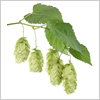Your cart
Ειδήσεις Για Την Εταιρεία Μας

 USA: Washington hop growers expecting another tight year of production and sales
USA: Washington hop growers expecting another tight year of production and sales
Washington hop growers are expecting another tight year of production and sales amid a hop glut and diminishing demand, Tri-Cities Business News reported on June 12.
The value of Washington hop production continued its steady decline, dropping 21% in 2024 while total acreage planted dropped by 14%.
The state’s hop value totaled $320.6 million in 2024, down from $405.7 million in 2023, and $434.4 million in 2022, according to the National Agricultural Statistics Service, the statistical branch of the U.S. Department of Agriculture.
Washington harvested more than 33,000 acres of hops in 2024, down from the previous year’s more than 38,000 acres. In 2022, hop growers harvested more than 42,000 acres.
“We don’t anticipate much more acreage coming,” said Maggie Elliott, science and communications director for the Hop Growers of Washington. “We’re getting much closer to a balance.”
That balance has to do with an overproduction of hops the past few years and more hops than growers can sell.
Total U.S. hop production dropped 16% to 87 million pounds in 2024, according to the Hop Growers of America’s 2024 annual report.
Washington hop growers followed suit, producing 64 million pounds in 2024, down from 76.5 million pounds in 2023.
They did it by scaling back on hop acreage.
Jason Champoux, vice president of crop production at Yakima Chief Hops, a grower-owned global hop supplier with a mission to connect brewers with family hop farms, said that Yakima Valley farmers made decisions to pare back their acreage in 2024.
“Trellises (which are expensive) have been removed, sold or the acreage sits idle,” he said. “Corn is actually being grown in some of the hop yards. In 2025, we expect a similar situation to 2024.”
The United States – and namely Washington, Oregon and Idaho – is still a major player on the world market stage when it comes to hops.
In 2024, the U.S. was the No. 2 producer of hops in the world, supplying 35% of the market. Germany was No. 1 at 41%.
Of the United States’ total, 74% came from Washington hop farms.
Throw in hop producers from Oregon and Idaho and the Pacific Northwest is responsible for 98% of all U.S. hop production.
There are a few factors involved in the oversupply in the hops market these past few years: water, changing drinking habits and tariffs.
The water situation is important as there’s only so much to go around.
Take a drive to the top of Snoqualmie Pass and look at the reservoir. It’s low, especially compared to a few years ago.
That reservoir is the head of the Yakima River, where water starts its journey to the rich farming valleys and farms in Eastern Washington.
The total water supply forecast for the Yakima Project was projected at 48% in mid-May. In early May, it was at 51%.
“The water situation is tough,” Elliott said.
But that’s not the only problem.
Champoux talked about consumers’ changing drinking and spending habits.
“There is inflation and less discretionary income,” he said. “During Covid, drinking habits changed. In cannabis-producing states, there has been less drinking. And people have become much more focused on health.”
The U.S. Surgeon General said in January 2025 that alcohol increases cancer risk and calling for new health labels on alcoholic beverages.
Yet Champoux sees a bright side to the consumption reduction.
“One positive thing: There has been a 20% non-alcohol sales rise,” he said.
People might be drinking more seltzers while products that once held two spots on a grocery shelf might only get just one spot.
A May 6 national Brewers Association report said craft brewers sold 23.1 million barrels of beer nationwide in 2024, down 3.9% from the previous year.
In 2024, there were 9,796 operating U.S. craft breweries, 444 of which are in Washington state, down from 459 in 2023. The Evergreen state ranks fifth in nation for the number of craft breweries.
It was the first year since 2005 that brewery closures outpaced brewery openings nationwide.
That’s fine, said Champoux, but he has some perspective.
“In comparison, there were 1,800 craft breweries in early 2010,” he said. “There have been just a lot of openings and closings. So, the numbers have really stayed up there. At the end of the day, in a free market, people can choose.”
An evolving global trade environment, compounded by a surge of legal challenges following the Trump administration’s tariffs, continues to generate more uncertainty than clarity.
“The majority of the hops we sell are exported. It’s very country specific,” said Champoux, who notes that growers have a global committee that studies the situation.
Recently, the group sent a supply of hops to Canada when tariffs dropped.
“So we sometimes can navigate around the situation,” Champoux said. “The problem is it’s so hard to predict.”
Elliott cites China as an example.
“Tariffs have been very volatile,” he said. “Hops are heavily export dependent.”
The 90-day suspension of retaliatory tariffs between the U.S. and China in May did bring welcome news to hop growers.
“Before that pause, tariffs were 150% for the whole cone of hops, 155% for the pellets, and 147.5% for the extract,” Elliott said. “But during the pause, those numbers are 35% for the whole cone, 40% for the pellets, and 32% for the extract.”
Hop growers will continue to reduce acreage to get the market in line with people’s buying habits.
“In 2025, we’re anticipating a slight decrease in acreage at 5% to 8%,” Elliott said. “... We’re getting closer. We’re coming back into balance.”
And a statement Champoux made a year ago still holds true today: “These are cycles. It’s not any different if it involved wheat or fruit trees. We have to align supply with demand.”
Πίσω





